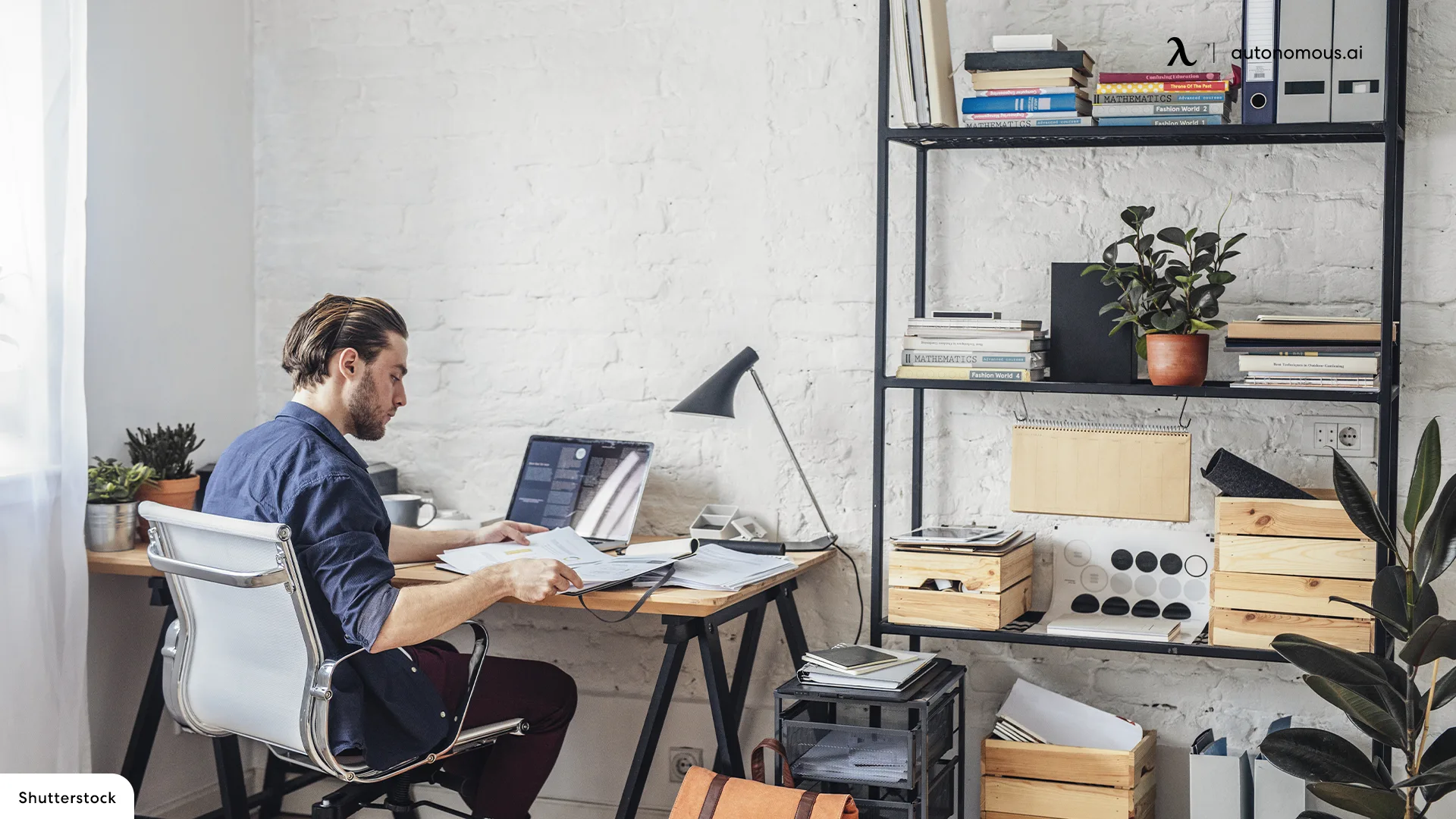Home office design ideas that encourage productivity will make work more pleasant than dreadful, such as choosing colors that inspire instead of overwhelm! That doesn’t have to mean an uninspiring color scheme either!
Clutter can be distracting, as can temperature and noise. Too cold could mean shivering away focus; too warm could have you dozing off during lengthy conference calls.
Ergonomics
Establishing the ideal work environment will enhance employees’ comfort and productivity, leading to decreased sick days, employee absences, turnover costs and morale issues in your workplace. In turn, this will strengthen safety culture overall.
Ergonomics is the practice of designing tools, work spaces and controls so as to meet an individual’s physical abilities and limitations. Ergonomics helps prevent problems like backache, neck strain and shoulder strain as well as fatigue and eye strain that arise due to poor ergonomic design.
Ergonomics can be achieved simply by having a chair that supports your lower back, as well as an appropriately placed monitor to avoid neck and eye strain. Key items like pens and notebooks, water bottles and headsets should also be within easy reach as well as having a wrist rest available for restful working conditions.
Soundproofing
Home workers often struggle with distractions and household noise that is difficult to control, making focus and productivity harder for artists, writers, musicians and any other professionals working from home. By creating a soundproof work space they can fully realize their creative potential.
Heavy curtains can help reduce outside noise and hang acoustic panels as decorative products on walls to absorb sound waves, reduce echos and absorb echoes. Rearranging bookshelves along noisy walls acts as additional barriers against external noise pollution.
White noise machines or apps designed to block distracting background noise are another effective way to boost productivity, helping your colleagues and customers understand you when communicating in person or over video conference call.
Lighting
Proper lighting is an essential element of home office design. It prevents distractions, strengthens focus and eases eye strain. To optimize productivity and minimize eye strain, try letting in as much natural light while eliminating glare – smart lighting systems also feature this capability – while smarter systems can adjust brightness and color temperature throughout the day to ensure that your workspace remains appropriately lit at all times.
Home offices require multiple layers of lighting that serve distinct purposes. Ambient illumination serves to illuminate the whole space while task lighting–such as desk lamps or shelf lights–providing direct illumination is key for productivity and concentration. Finally, accent lighting adds visual interest by emphasizing decorative features in the room and drawing attention to decorative features like decorative pieces in a room; pendant lights or chandeliers can help achieve a contemporary yet elegant aesthetic in a home office environment.
Personal touches
At the core of productivity lies having a clean workspace. Utilizing shelving and desk organizers can help keep it free from clutter, allowing you to focus more easily and work more efficiently. Clearing away at the end of every day is also vitally important to keeping it looking its best!
Placing art and photos that reflect your interests into your home office can create a warm and welcoming work space, while displaying achievements like trophies or diplomas can motivate you to reach greater success in future endeavors.
Greenery and natural elements bring natural inspiration and focus into any workspace, as well as providing a sense of tranquility and stress reduction. Selecting plants with minimal upkeep requirements can reduce toxins in the home and improve air quality.
Technology
Home offices can benefit greatly from technological tools to boost productivity. Solutions like digital calendars and room booking software enable employees to focus more on the task at hand than administrative duties.
Technology can also assist remote workers by helping reduce distractions when working from home, such as noise from kids and pets, neighborhood traffic, or video conference calls that could interrupt. This is particularly helpful since remote workers tend to lack informal interaction like that found in traditional office settings – leading to feelings of isolation.
Investment in high-performance laptops that combine desktop capabilities with easy portability is another effective strategy to enhance home office productivity, enabling users to multitask more effectively and complete projects faster than before.




